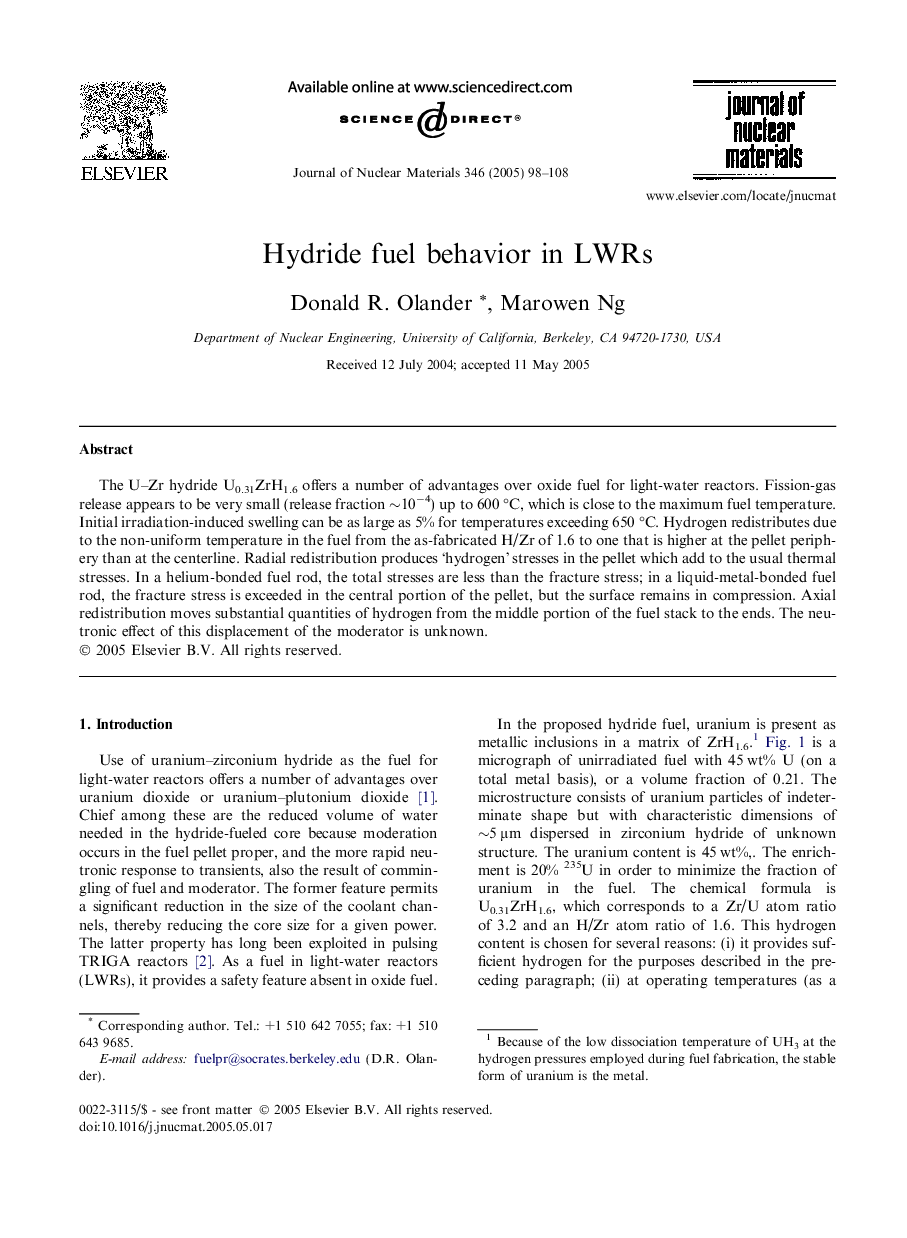| Article ID | Journal | Published Year | Pages | File Type |
|---|---|---|---|---|
| 9793574 | Journal of Nuclear Materials | 2005 | 11 Pages |
Abstract
The U-Zr hydride U0.31ZrH1.6 offers a number of advantages over oxide fuel for light-water reactors. Fission-gas release appears to be very small (release fraction â¼10â4) up to 600 °C, which is close to the maximum fuel temperature. Initial irradiation-induced swelling can be as large as 5% for temperatures exceeding 650 °C. Hydrogen redistributes due to the non-uniform temperature in the fuel from the as-fabricated H/Zr of 1.6 to one that is higher at the pellet periphery than at the centerline. Radial redistribution produces 'hydrogen' stresses in the pellet which add to the usual thermal stresses. In a helium-bonded fuel rod, the total stresses are less than the fracture stress; in a liquid-metal-bonded fuel rod, the fracture stress is exceeded in the central portion of the pellet, but the surface remains in compression. Axial redistribution moves substantial quantities of hydrogen from the middle portion of the fuel stack to the ends. The neutronic effect of this displacement of the moderator is unknown.
Related Topics
Physical Sciences and Engineering
Energy
Nuclear Energy and Engineering
Authors
Donald R. Olander, Marowen Ng,
